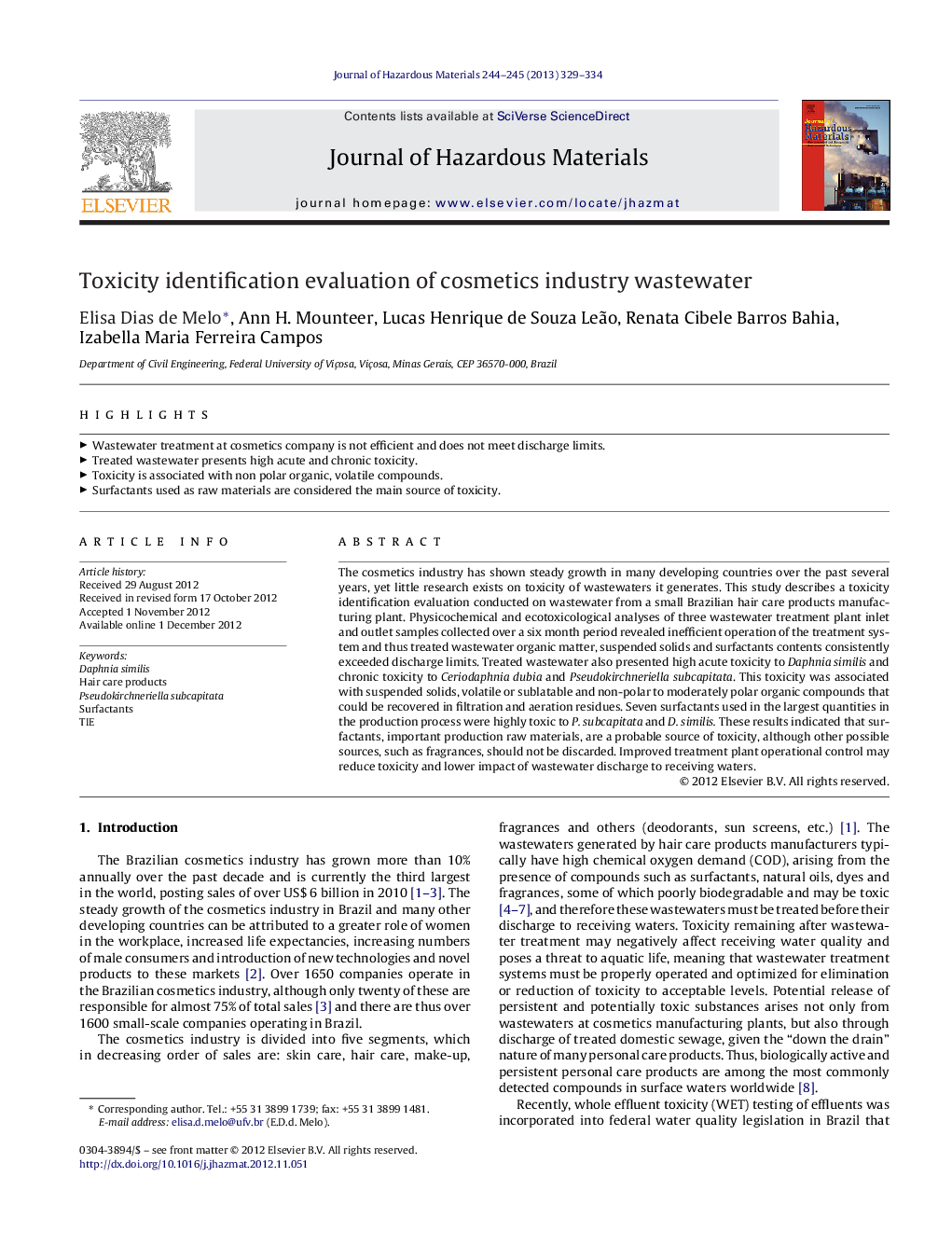| کد مقاله | کد نشریه | سال انتشار | مقاله انگلیسی | نسخه تمام متن |
|---|---|---|---|---|
| 577524 | 1453107 | 2013 | 6 صفحه PDF | دانلود رایگان |

The cosmetics industry has shown steady growth in many developing countries over the past several years, yet little research exists on toxicity of wastewaters it generates. This study describes a toxicity identification evaluation conducted on wastewater from a small Brazilian hair care products manufacturing plant. Physicochemical and ecotoxicological analyses of three wastewater treatment plant inlet and outlet samples collected over a six month period revealed inefficient operation of the treatment system and thus treated wastewater organic matter, suspended solids and surfactants contents consistently exceeded discharge limits. Treated wastewater also presented high acute toxicity to Daphnia similis and chronic toxicity to Ceriodaphnia dubia and Pseudokirchneriella subcapitata. This toxicity was associated with suspended solids, volatile or sublatable and non-polar to moderately polar organic compounds that could be recovered in filtration and aeration residues. Seven surfactants used in the largest quantities in the production process were highly toxic to P. subcapitata and D. similis. These results indicated that surfactants, important production raw materials, are a probable source of toxicity, although other possible sources, such as fragrances, should not be discarded. Improved treatment plant operational control may reduce toxicity and lower impact of wastewater discharge to receiving waters.
► Wastewater treatment at cosmetics company is not efficient and does not meet discharge limits.
► Treated wastewater presents high acute and chronic toxicity.
► Toxicity is associated with non polar organic, volatile compounds.
► Surfactants used as raw materials are considered the main source of toxicity.
Journal: Journal of Hazardous Materials - Volumes 244–245, 15 January 2013, Pages 329–334